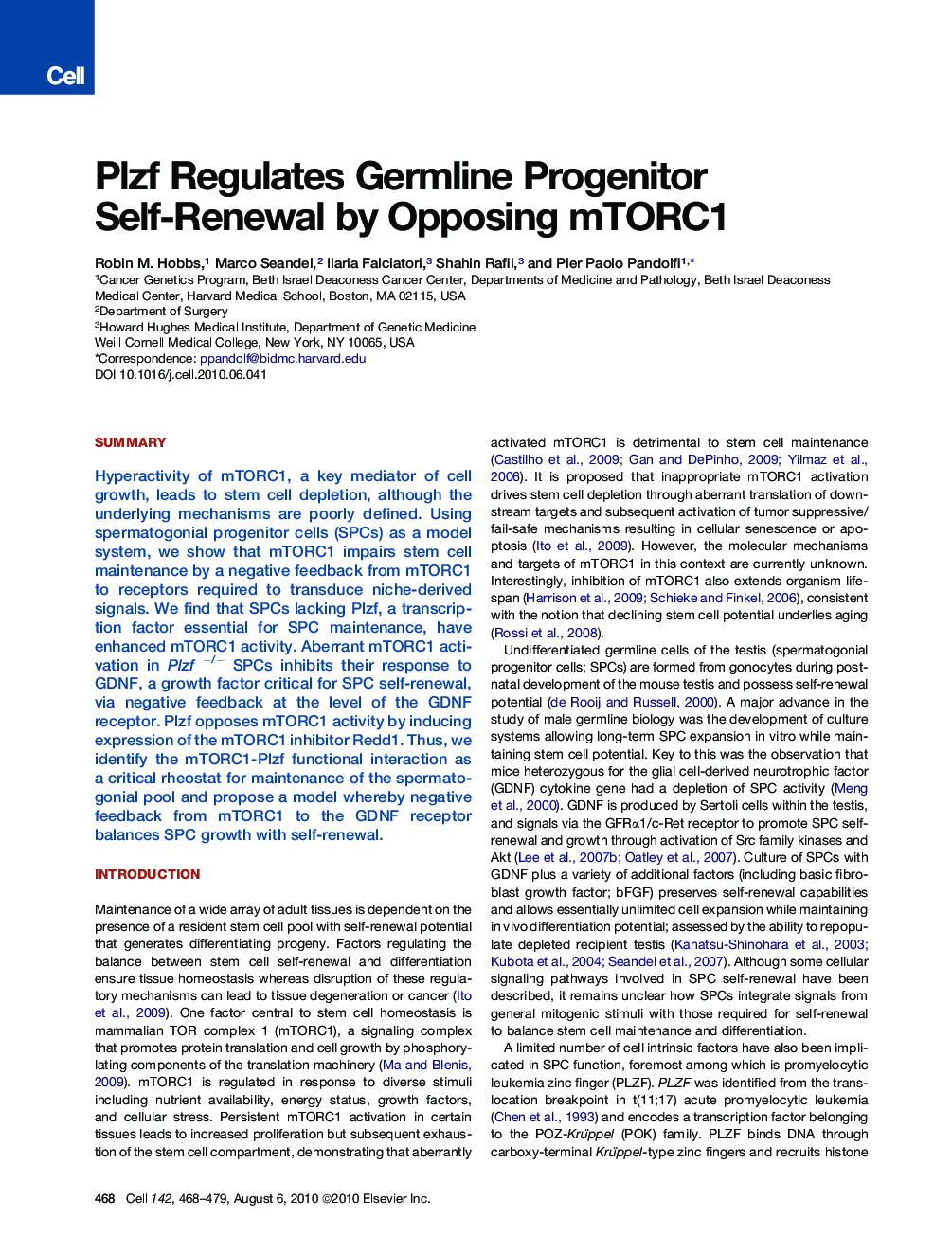| Article ID | Journal | Published Year | Pages | File Type |
|---|---|---|---|---|
| 2036208 | Cell | 2010 | 12 Pages |
SummaryHyperactivity of mTORC1, a key mediator of cell growth, leads to stem cell depletion, although the underlying mechanisms are poorly defined. Using spermatogonial progenitor cells (SPCs) as a model system, we show that mTORC1 impairs stem cell maintenance by a negative feedback from mTORC1 to receptors required to transduce niche-derived signals. We find that SPCs lacking Plzf, a transcription factor essential for SPC maintenance, have enhanced mTORC1 activity. Aberrant mTORC1 activation in Plzf−/− SPCs inhibits their response to GDNF, a growth factor critical for SPC self-renewal, via negative feedback at the level of the GDNF receptor. Plzf opposes mTORC1 activity by inducing expression of the mTORC1 inhibitor Redd1. Thus, we identify the mTORC1-Plzf functional interaction as a critical rheostat for maintenance of the spermatogonial pool and propose a model whereby negative feedback from mTORC1 to the GDNF receptor balances SPC growth with self-renewal.
Graphical AbstractFigure optionsDownload full-size imageDownload high-quality image (209 K)Download as PowerPoint slideHighlights► Plzf maintains the undifferentiated state of spermatogonial progenitor cells (SPCs) ► Plzf inhibits activity of the mTORC1 pathway in SPCs by inducing Redd1 ► Increased mTORC1 activity inhibits response of SPCs to the niche-derived factor GDNF ► Inhibiting mTORC1 attenuates Plzf−/− SPC defects and enhances wild-type SPC activity
